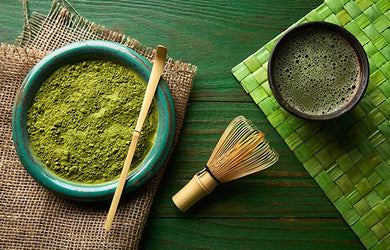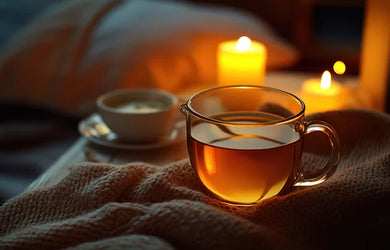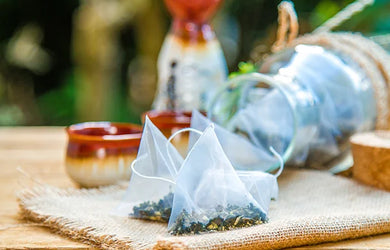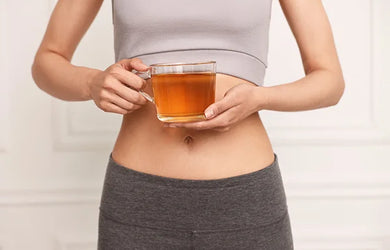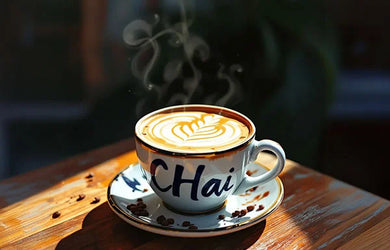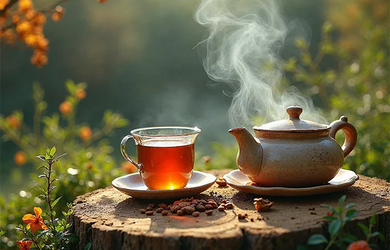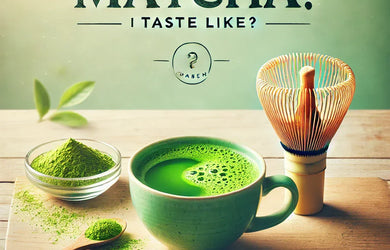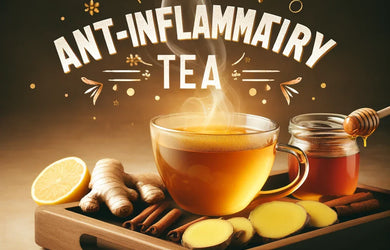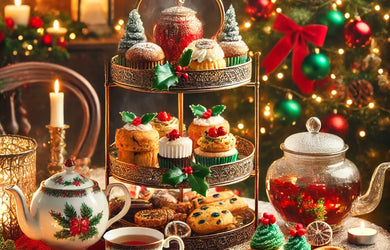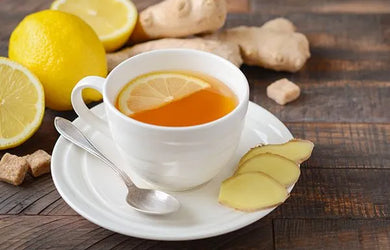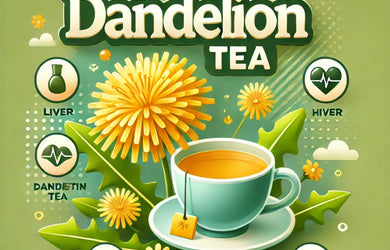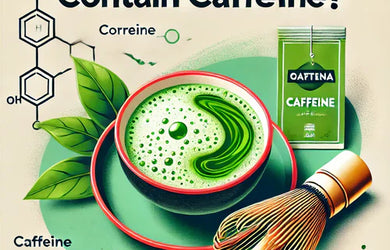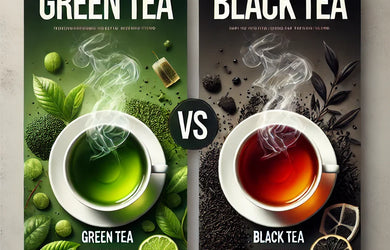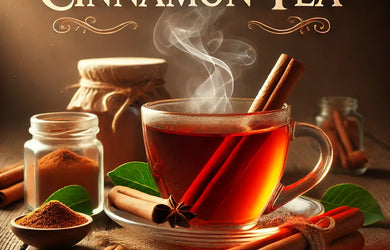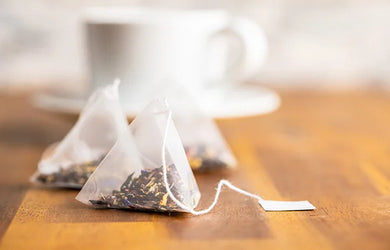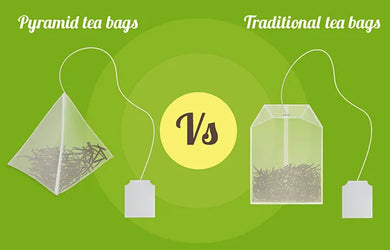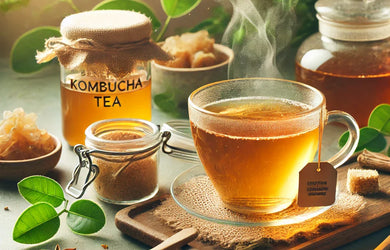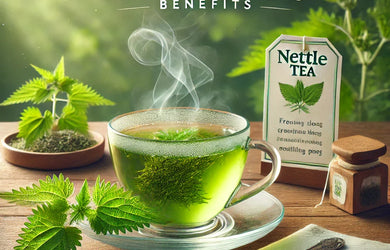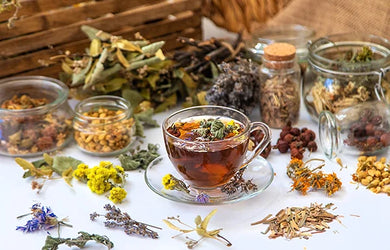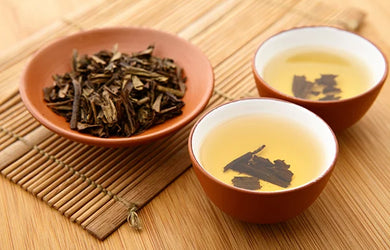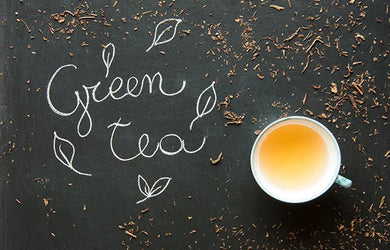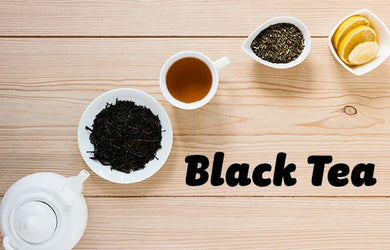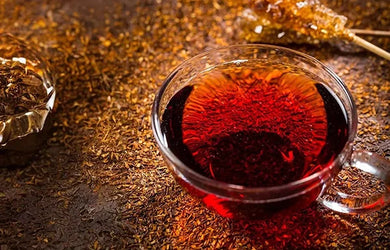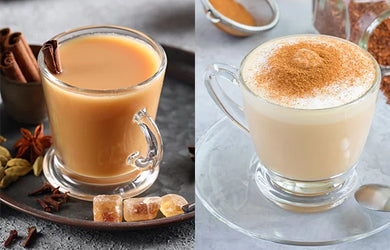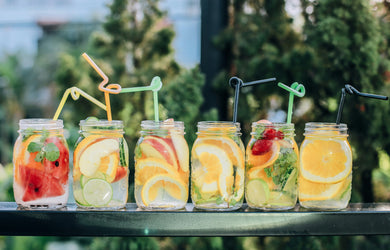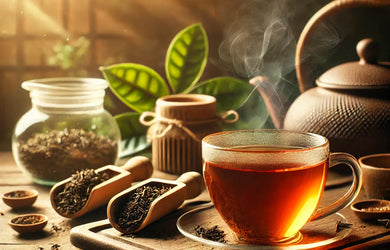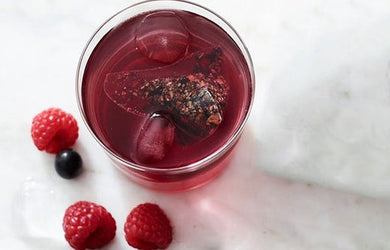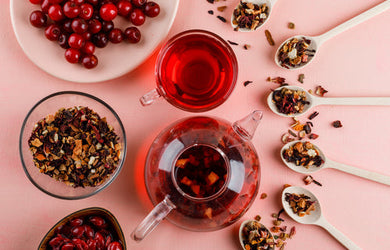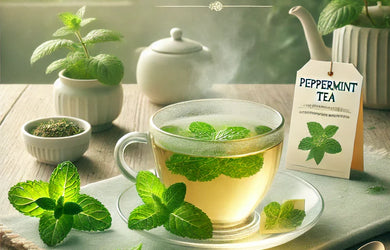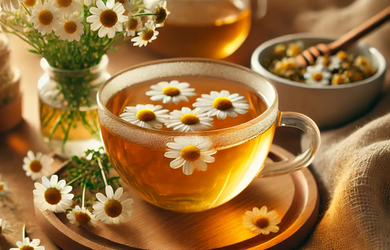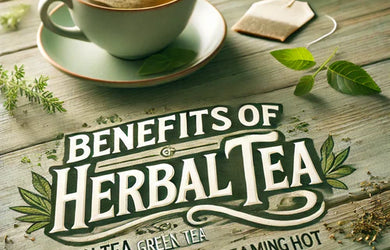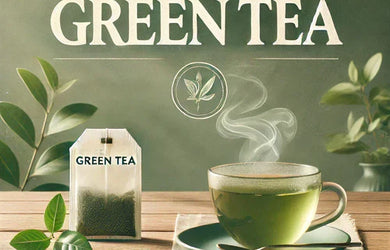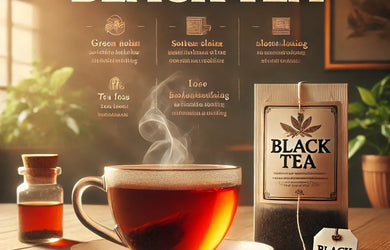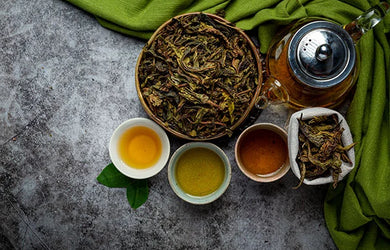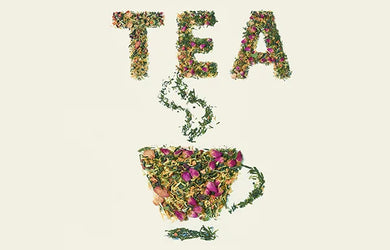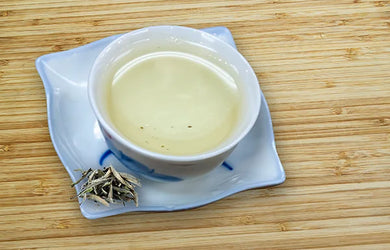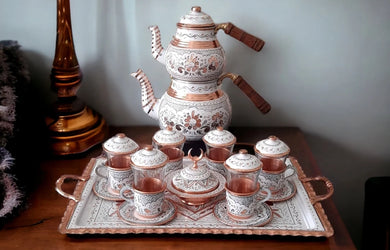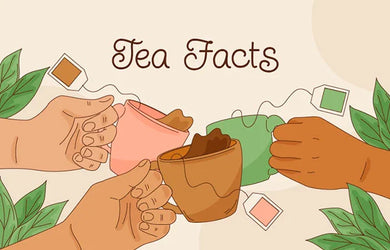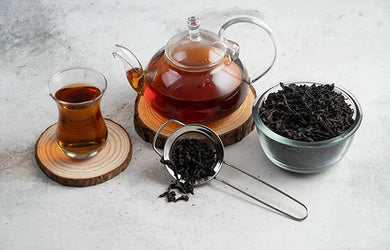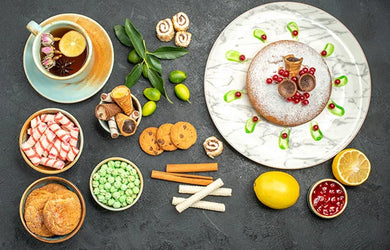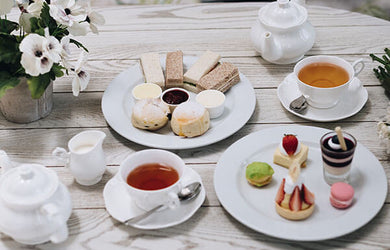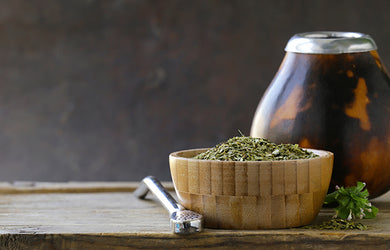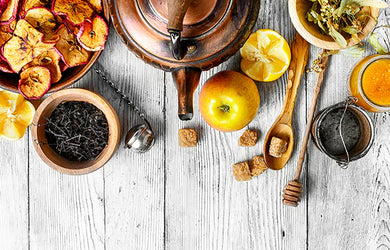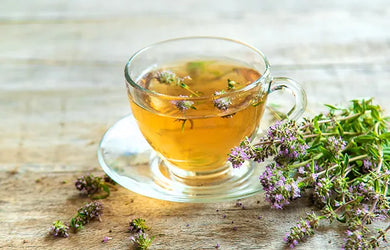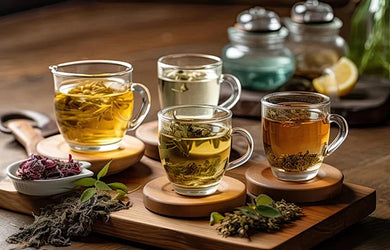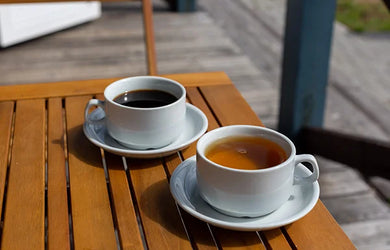in menus full of similar names, it can be tough to decipher every one of them and understand what you’re ordering. you might be brave enough to still go ahead and order, but sometimes your order may not turn out as expected. well, it happens to all of us!
but no worries! we’re here to help you spot the differences…and we’ll compare chai tea vs chai latte! by the end, you'll have a clearer understanding of these two popular drinks and be able to order confidently based on the knowledge you gain here.

understanding chai tea
what is chai tea?
the word "chai" means "tea" in hindi (one of the indian languages) which comes from the chinese word for tea – “cha”. so, "chai tea" literally translates to "tea tea"!
but there’s more to tea than just its name! after all, it’s rooted in ancient practices that go a long way back in time. back then, chai was mostly made for its healing qualities.
it became true tea (as we know it today) in the 1800s when tea plants were discovered in india. these plants had big, thick leaves with a slightly bitter taste. to balance this bitterness in tea, milk and sweetener were added – creating the first version of chai tea.
as the popularity of black tea grew, so did the experimentation of tea drinkers. they began mixing it with various herbs, spices, types of milk and sweeteners. from then until now, a lot has changed in what chai tea stands for. undoubtedly, in a positive way – as its popularity is proof enough!
chai tea ingredients
there’s no single set of ingredients in a chai tea recipe, but it generally uses a combination of some (rarely all) of the following ingredients.
- black tea serves as a base for chai tea. any good quality black tea bags (or loose leaves) do the job.
- milk balances the bitterness of tea's tannins and adds creaminess.
- sweetener can be any form – white/brown sugar, jaggery, honey or any of the sugar substitutes.
- fresh ginger root gives a sharp and pleasantly pungent taste that adds zest and warmth to the mix. for a stronger flavour, its slices or pieces are gently crushed.
- green cardamoms are very fragrant and have a bright, citrusy flavour with mild eucalyptus notes.
- cinnamon sticks (or powder) have an earthy taste with an appealing sweetness and aroma.
- cloves are small and dried flower buds with a flavour that can be described as peppery and astringent.
- nutmeg has a nutty, earthy and slightly sweet but not sugary taste that goes well with other spices in tea.
- star anise has a strong, distinct flavour that’s warm, sweet and spicy – all at the same time.
- black peppercorns add an earthy and spicy flavour to the tea.
- saffron threads add a unique golden red colour to tea and a musky flavour.
brewing chai tea
well, we’ve already explored the range of spices used in chai tea. now, they can be used in any combination as preferred by the tea maker. so, the recipe we’ve provided is just a guideline. you can always swap the spices, milk or sweeteners used with the ones you like.
ingredients:
- 1 cup water
- 1 cinnamon stick (small)
- 2 black peppercorns (crushed)
- 2 green cardamom pods(crushed)
- 1-inch fresh ginger root (roughly chopped or sliced)
- 2 teapigs black tea bags (or loose tea leaves)
- ½ cup whole milk
- 1 tsp sugar
method:
- infuse the spices. grab a saucepan and add water, crushed cardamom pods, cinnamon sticks, slightly crushed ginger slices and black peppercorns. let them all simmer gently over medium heat for about 5 minutes. the heat allows the spices to release their aroma and flavours into the water.
- add tea bags and milk. then add the black tea bags to the simmering spiced water and pour in the milk of your choice. let it continue to simmer for another 3-4 minutes, allowing the water to fully infuse with the spices, tea leaves and milk. then bring the mixture to a brief boil.
- add sweetener and blend. once boiling, turn down the heat to low, add sugar (or any other sweetener) and let the chai simmer for an additional 3-4 minutes. this gives enough time for the sugar to dissolve and all the other ingredients to blend properly.
- strain and serve. strain the chai tea into cups using a good strainer.
flavour profile of chai tea
the profile of chai tea depends on what goes into making it. if it contains lots of ginger and black peppercorns, it'll be spicy. but if it contains cinnamon, it'll be less spicy and slightly sweeter.
some chai tea varieties have saffron threads, giving chai tea a bit of an earthy flavour. and some have star anise, giving it a somewhat sweet flavour like liquorice.
the selection of chai spices and their ratios define the final taste of the drink. that’s because their ratio changes the level of spiciness, sweetness or earthiness in flavours. depending on the blend, you might notice one spice more than the others, which makes it even more interesting. but one thing almost never changes – the comforting experience chai tea provides.
overall, this tea is a perfect mix of sweet and spicy, with a creamy feel from the milk or dairy alternatives. the sweetness isn't too much and lets those spices enhance the taste.
all about chai latte
what is a chai latte?
a chai latte is a warm and creamy drink lightly infused with spices and with a lovely aroma. it can be safely regarded as a creamier and lighter version of the traditional tea. it’s made by adding a large quantity of steamed milk to black tea that’s infused with several spices. as you may have guessed, this drink is inspired by café lattes, which also contain a higher ratio of steamed milk compared to tea.
since there’s a wide variety of chai spices out there, tea makers usually blend a selection of them based on the final taste they have in mind. regardless, these spices give chai latte a unique flavour that’s balanced with steamed milk and topped with milk froth.
the spices used vary from one recipe to another – some cafés even create their signature syrups or blends and keep the recipe a secret. but the common chai spices and other ingredients aren’t a secret, and we’ll check them out in a bit.
chai latte ingredients
ingredients and their ratios define the taste and the calorie content of a drink, which is why some café-bought chai lattes are overly sweet while others are not. due to such experiences, one common misconception about chai lattes is that they are usually high in calories. while this can be true for certain commercially available varieties, it doesn't apply to every chai latte.
basically, different chai latte recipes use different combinations of ingredients, and you can easily monitor what goes into your recipe. the key is to create a good balance where each ingredient enhances the overall flavour of the drink. the usual ones include cardamom, ginger, cinnamon, black pepper, nutmeg, whole (or non-dairy) milk and a sweetener.
apart from some combination of the above ingredients, you’re likely to find the flavour of vanilla in some versions of chai latte. it’s used to enhance the sweet and creamy notes in the drink. the steamed milk content is also aimed at creating a rich and creamy texture that complements the warm and spicy flavours of the chai spices.
usually, whole milk is used for a rich and creamy texture, but even other types of milk can be used, like the non-dairy alternatives.
making a chai latte
making a chai latte may sound intimidating, but it’s not difficult! while the process of making chai tea vs chai latte may be simpler, the latter also has a very straightforward process that can be easily mastered.
ingredients:
- 1 cup water
- 1 cup of milk (dairy or non-dairy)
- ½-inch fresh ginger root (or ½ tsp ginger powder)
- 2 teapigs black tea bags (loose tea leaves)
- cinnamon powder for garnish
- ¼ teaspoon of vanilla extract
- 2-3 green cardamom pods
- 1-inch cinnamon stick
- 1 tablespoon sugar
- 1-2 cloves
method:
- boil water. grab a small pan, pour in water and place it on heat for boiling. while it’s heating up, lightly crush fresh ginger pieces in a mortar and pestle, then add them to the pan.
- add tea bags and spices. once it’s boiling, add black tea bags and other spices mentioned (you can always swap them with your preferred ones). you can even swap the plain black tea bags with the ones that already contain the spice mix (like teapigs chai tea bags). in that case, you can skip adding the spices separately.
- add milk. use half of the milk along with sugar and then boil for about 4 minutes.
- strain and add froth. now, remove it from heat and strain it into a cup using a strainer. next, use another pan to steam the remaining milk and froth it using a frother. then pour the steamed milk into the tea while holding back on the froth. finally, top the tea with froth and sprinkle some cinnamon powder.
flavour profile of chai latte
well, the first thing you would taste is the milk foam on top, followed by a very pleasant spicy taste with strong sweetness and creaminess of steamed milk. the higher milk content of chai latte vs chai tea adds a creamy element to the latte, creating a smooth and velvety drink.
that’s the usual experience of a chai latte, though its exact flavour can vary depending on the spices and other ingredients used. for instance, when cloves, cinnamon, cardamom and ginger are added, you can expect a lightly spicy and earthy flavour accompanied by the aroma of cinnamon.
moreover, the type of milk used can also influence the flavour profile. dairy milk gives a rich and creamy taste, while non-dairy alternatives like almond, soy or oat milk can offer slightly different flavours – they can have nuttier or sweeter notes.
overall, a chai latte is a mildly spicy, sweet and creamy tea that can be enjoyed both hot and cold.
comparing chai tea vs chai latte
flavour differences
chai tea vs chai latte offers a contrasting flavour experience despite sharing a common base of black tea and spices. chai tea has a complex flavour with stronger spicy and earthy notes. the blend of spices, including cardamom, cinnamon, ginger and cloves, creates a strong tea. chai tea vs chai latte has more warmth, so if you prefer a stronger tea chai tea could be your preferred one.
however, a chai latte with lesser tea content could be your preference if you like a lighter tea. this difference in chai tea vs chai latte comes from the milk content. chai tea can be made with less or no milk at all. in contrast, there’s a higher ratio of milk in a chai latte and that makes a difference in the flavour. the portion may be equal parts or more than tea. the steamed milk is introduced into the tea and then topped with milk froth. this significantly alters the taste and texture.
the addition of more milk in chai latte vs chai tea results in a creamier and smoother taste as extra milk balances the strength of spices. chai latte only has a fraction of the spiciness of chai tea, with the milk adding a subtle sweetness and enhancing the overall creaminess.
the effect of milk shows on the appearance also. chai tea vs chai latte is much darker in colour. it’s usually darker shades of brown while chai latte has much lighter shades.
brewing techniques
the brewing techniques of chai tea vs chai latte differ in some ways, and that shows in the final flavour and appearance of the two. chai tea is made by boiling black tea leaves with a blend of spices in water. this is done to extract the flavours of the spices and tea leaves, resulting in a strong mix which is then strained and served as is or with milk.
it can be prepared using different ratios of milk during or after the steeping of tea leaves and spices. and this ratio obviously depends on how strong the final taste of tea is required.
in contrast, the chai latte has additional steps of adding steamed milk and froth on the top. to make a chai latte, the process starts similarly to that of chai tea. however, instead of using just water it usually has either just milk or a combination of milk and water.
once the spices and tea infuse the milk, it’s strained into a cup and steamed milk is added to create a creamy drink. this process not only dilutes the strength of the tea but also adds a smooth texture to the drink.
overall, the key difference in brewing techniques of chai tea and chai latte lies in the addition of steamed milk.
conclusion
now that you know the differences between chai tea and chai latte, you can choose the one that perfectly matches your taste – strong and spicy chai tea or lighter, creamier and smoother chai latte.
with clarity on the ingredients and the brewing techniques, you have a better idea of what’s packed in your drink. so, the next time you order your drink at a café, trust that you know exactly what you're getting.
and if you want to make one of them for yourself at home, let our recipe be your guide! the step-by-step guide will walk you through the process.
faqs on chai tea vs chai latte
q. is chai tea and chai latte the same thing?
a. a comparison of chai tea vs chai latte shows a few key differences between the two. chai tea is a traditional and stronger spiced tea made with milk and spices. in contrast, chai latte is a light and creamy tea with a higher ratio of steamed milk.
q. can i make chai tea without milk?
a. chai tea can be made with or without milk. it’s made with water and a combination of spices such as cinnamon, cardamom and ginger. it's then strained and served with or without milk, according to the drinker’s preference.
q. how can i sweeten chai latte naturally?
a. you can use ingredients like honey, maple syrup or stevia to sweeten chai latte naturally. just add them to your tea and stir to mix, before adding milk. however, if you want to try something different, you can instead use seedless dates.
q. are there decaffeinated versions of chai tea and chai latte?
a. decaffeinated tea and spiced chai are readily available in stores or online. these decaf options can be used as a base to make either chai tea or chai latte. you can then customise them and add the spices and milk according to the recipe of the tea being made.









